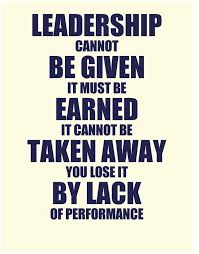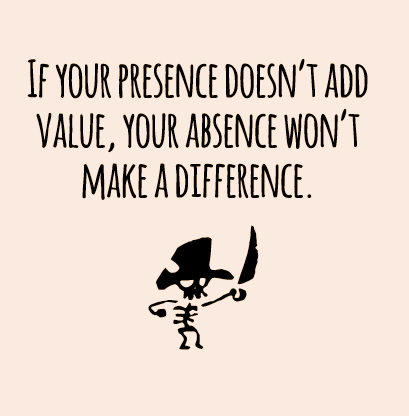http://www.patrickmckenna.com/blog
Page << Prev 20 21 22 23 24 25 26 27 28 29 Next >> of 95
Post #722 – Friday, December
5, 2014
The Future of Legal Management Magazine – RIP?
 On the LinkedIn site for the
Association of Legal Administrators, the Managing Editor of the Association’s Legal Management magazine asked the
following question, “What do you think of the Legal Management’s November issue?
We want to hear your thoughts on
the content we are creating for our members! This month learn how firms are revamping their
online presence, explore 401(k) options for employees, and meet the legal industry's
latest enemy: prescription drugs. Are we
covering the right topics? Please let us
know in the Comment section below.” On the LinkedIn site for the
Association of Legal Administrators, the Managing Editor of the Association’s Legal Management magazine asked the
following question, “What do you think of the Legal Management’s November issue?
We want to hear your thoughts on
the content we are creating for our members! This month learn how firms are revamping their
online presence, explore 401(k) options for employees, and meet the legal industry's
latest enemy: prescription drugs. Are we
covering the right topics? Please let us
know in the Comment section below.”
The first comment to be posted was this:
"I barely look at the magazine anymore. When it was a paper version, I read it pretty
much cover to cover. The digital version
is proving to be very difficult for me to maneuver around. If there were even a way I could pull it up in
book form and "flip" the pages, I might be more inclined to read it. In the current form, I just always feel
completely lost.”
In spite of a number of
offers from the Managing Editor to provide assistance (“If you
would like a one-on-one tutorial on how to use the Legal Management website or
the app, or both, I would be happy to provide one.”) that posting was followed by numerous Executive
Director and COO’s comments, from small firms to those of over 500 attorneys,
claiming:
“I always read the print version but never read the online
version. I used to read it at lunch time, but I can't do that now.”
“I must agree with most of the comments here. I, too, have pretty much given up on reading
it. I can carry a magazine about and
read it any time there is light. Reading
on a computer, pad, or phone is very tiring on my eyes, especially the tiny
phone screen. Additionally, it is far easier to flip between pages than jump
back and forth between screens, even when there is an index or ToC.”
“I have not read any of the issues since you have changed to
this format. I find it difficult to
maneuver. I prefer the printed issues
that I can take with me anywhere. I hope
you reconsider and bring back the printed issues.”
AND even from the owner of a
Law Office Technology Consulting firm, this insightful observation . . .
“I find it interesting that the ‘powers that be’ seem to think
that going on-line is the wave of the future.
I disagree. You can't take your
computer and read the publication over breakfast, lunch or dinner, or over
coffee, or on the bus / train, or while in the "library". No....give me printed material every
time. When you are done reading it at
YOUR convenience, you can always recycle it.
Please, stay with the print version!”
The response from the
Association’s Managing Editor in a classic demonstration of how to give clients
what they want . . .
“At this time, there is not a plan to bring back the printed
version of the magazine. However, if you do have specific suggestions that
would help with your user experience, please feel free to share them, either
here or by emailing me . . . ”
 The Editor’s comment was followed by the disgusted response of this
COO: The Editor’s comment was followed by the disgusted response of this
COO:
“Sometimes I think the HQ Staff
doesn't realize that all of us are busy doing our job. We really don't have the time to have a
personal tutorial on how to use an app to read a magazine that many of us read
over the years the "old fashioned" way. By reviewing the comments in this blog, it
seems that ALA Legal Management is probably being read less since the
introduction of the electronic version, compared to the printed version.”
Please do not misconstrue the intent of this Blog post. I am not picking on the ALA. I am sincerely fascinated by this discussion and
thinking out loud about how many readers, those magazines that make themselves
available ONLY in an electronic format may be turning away. In the case of the ALA, their LinkedIn site
identifies over 9000 members, but not one member answered the original question
posed in this discussion post by citing some specific article that they enjoyed
reading in the November issue.
Meanwhile, one wonders what those who invest good money
advertising in this magazine might think after reading all of these
comments. For my part, it reminded me of
an earlier life spent as a VP in a technology-based public company where the
CEO would comment that "it is often not a matter of what our technology
can do so much as what our sociology will accept."
Post #721 – Tuesday,
December 2, 2014
15 Leadership Reflections For 2015
Culture change
experts take heed: If you can infuse these practices into every leader's
drinking water, you'll be more than halfway there.
 • Create goals
that are both realistic and UNREALISTIC; commit your goals to writing and
ensure that they are measurable, and then celebrate the achievement of each
goal. • Create goals
that are both realistic and UNREALISTIC; commit your goals to writing and
ensure that they are measurable, and then celebrate the achievement of each
goal.
• Repetition
is paramount. Remember
parenting? How many times did you have to remind your kid to shut the door,
wipe their feet, take off their shoes or wash their hands before they did it on
their own? Nobody remembers to do something after hearing it once. In this
respect, adults are just overgrown kids -- make it clear and say it often. The
bigger the change, the more this applies.
• Be genuinely
interested in the needs of others and be interested in the growth of others
even more so than the others are at times.
• Know that
all endeavors will not be easy and will not happen the way you would have
planned or wished. Inspire persistence even after the first, second, and third
rejection of an attempt.
• Infuse a
need to grow by teaching . . . rather than simply giving the answers.
• Fuss over
others’ events, achievements, families, and friends.
• Avoid
assuming that your communication or personality style is the one everyone else
has and learn to modify your communication style to the style of others. Adhere
to the principle that “communication is not what was said, but what is
received.”
“Give yourself
permission to leave things undone and let go of needing to be perfect, and of
needing everyone else to be perfect”
• Show up
and play to the heart. Communication
that is high-touch, low-tech inspires people to action faster than the one-way
speech, the blog, the dry facts. If you want buy-in, find the passionate story,
do the road show, and make it interactive.
• Find the
real meaning, stop hiding in your office, and get with the people.
• Become clear
and comfortable with the fact that leadership does not mean “being the most
popular one on the playground.”
• Believe that
people do what they get paid attention for, and be spontaneous, as well as
scheduled in your recognition efforts; but avoid giving a public person,
private recognition as they will see little or no value in it.
• Maintain an
awareness of just how much your body communicates and remember that your body
continues talking long after your lips stop moving!!!
• Remember
that money does NOT motivate for the long term and becomes expected.
• Do before
talk, ask before tell. Almost
all leaders over-talk and under-do. If you want people to make a change,
DEMONSTRATE the change yourself first. Ask a lot of questions and listen well
(it's why you have two ears and one mouth, right?). Fix something that is
driving your colleagues crazy. You want more innovation? Show them an
innovative idea you carried out. Want to cut costs? Cut one of your
entitlements first. Anything less will be viewed as insincere and arrogant --
even though you are infinitely well-intended.
Exhibit
leadership traits as part of who you are, not what your particular title
is.
Post #720 – Monday,
November 17, 2014
Why Great Leaders
Always Give Feedback
 Here's an exercise for you to try.
Take a blank piece of paper. Draw a vertical line straight down the middle. On
the left-hand side of the page, jot down five recent instances wherein you did
NOT give someone feedback . . . when, in retrospect, you definitely should
have. This can be anything – from not confronting some partner who failed to
follow through on their promises, to not telling your colleague how she could
have handled a difficult situation far more diplomatically. Here's an exercise for you to try.
Take a blank piece of paper. Draw a vertical line straight down the middle. On
the left-hand side of the page, jot down five recent instances wherein you did
NOT give someone feedback . . . when, in retrospect, you definitely should
have. This can be anything – from not confronting some partner who failed to
follow through on their promises, to not telling your colleague how she could
have handled a difficult situation far more diplomatically.
Now look at the first of your examples
and in the right hand column write the reason you didn't say anything. Do this
for each situation.
I'll bet that the rationalizations
you have cited in the right hand column are things like: "no time, it's
not worth creating a fuss, why bother?” Or, “I've tried it before and nothing
changed, I don't want to offend." These are among the countless
justifications we all use for doing nothing.
Let's turn this situation around. If
you were on the other end of a confrontation that someone thought you could
have handled more effectively, would you want to know? I think you probably
would. So what prevents you from providing frank and constructive feedback?
I guess the only legitimate reason
would have to be that you either don't like this individual or you don't really
care!
After all, there is only one
legitimate reason you (and every great leader) should give feedback. You give
feedback because you sincerely want to help someone. You're giving feedback
because you are genuinely concerned for the individual. You want them to do
something differently in their best interests and for their benefit, not for
yours.
Finally, there is a strong correlation
between asking for feedback and leadership effectiveness. In a recent study of
51,896 executives by the leadership development firm Zenger/Folkman, those who
ranked at the bottom 10% in asking for feedback (they asked for feedback less
often than 90% of their peers) were rated at the 15th percentile in overall
leadership effectiveness. Meanwhile, those leaders who ranked at the top 10% in
asking for feedback were rated, on average, at the 86th percentile in overall
leadership effectiveness.
Post #719 – Saturday,
November 1, 2014
Being An Effective Leader Is
All About Relationships
 It has been my observation, over the years, that many leaders
rank low on empathy. They understand it
intellectually, they just don’t pay enough attention, ask the right questions
or comprehend that it is not just about what your colleagues think, but about
how they feel. To be an effective leader
you need to do more than just manage the bottom line and watch the numbers like
a hawk. Obviously that may be necessary,
but so is offering suggestions, being supportive, being a source of creative
ideas, helping your people think through their roles and helping them make the
best use of their time. If fact, that is
precisely what the best leaders do. It has been my observation, over the years, that many leaders
rank low on empathy. They understand it
intellectually, they just don’t pay enough attention, ask the right questions
or comprehend that it is not just about what your colleagues think, but about
how they feel. To be an effective leader
you need to do more than just manage the bottom line and watch the numbers like
a hawk. Obviously that may be necessary,
but so is offering suggestions, being supportive, being a source of creative
ideas, helping your people think through their roles and helping them make the
best use of their time. If fact, that is
precisely what the best leaders do.
As you think about how you exhibit genuine empathy here are five
questions for you to contemplate.
• Do you show a genuine interest in what each of your
professionals wants to achieve with their careers?
Think about each member of your team. Have any valued members left recently or
announced that they are about to? Are
some individuals, with a lot of potential, performing at levels far below where
they should? If your answer to either of
these questions is affirmative, then the chances are that you may have
neglected to pay attention to something these individuals need to jump-start
their careers. Paying close attention to
what your professionals need in developing their careers is a critical part of
any leader’s role.
• Do you show an interest in the things that mean the most to
your people in their personal lives?
All of the people in your group have personal lives that are
very important to them. Consider: do you explore with each of your people what
they are keenly passionate about in their lives? Do you ask questions that get them talking
about their interests? And when they do
start talking about personal issues, do you show anything more than a
perfunctory interest?
You may think, I’m not sure that people who have a professional
working relationship really need to talk to each other about this kind of
stuff. What is unsettling to me is that
the qualities it takes to develop and nurture any successful relationship, are
the exact same as required to develop and nurture a successful team. We may need to reflect upon whom we spend more
time with during the average working week, our spouses or our office
colleagues.
• Are you there for your colleagues in their times of personal
or professional crisis?
Every so often all of us confront crises and make important
transitions in our lives. A family member goes into the hospital or a child is having a
particularly difficult time at school. These
various personal issues can very naturally manifest themselves in professional
behavior that suggests a sudden disinterest in the work or, at the other
extreme, people who are burying their personal issues in workaholic traits.
Right now, as you read this, it is very likely that some member
of your team is facing some significant crisis or transition. If you are even aware of it, what kind of
support are you offering?
• Do you informally “check-in” with each of your colleagues
every so often?
Then there is the situations when work commitments get
over-powering, when our internal systems seem to make it harder to get anything
done, or when a technology glitch makes us wish for simpler times. When these things happen, they don’t have a
devastating effect, but they do preoccupy us. One of the things that helps is having someone
notice and say: “You look a little distracted. What’s going on?”
If a leader takes a few minutes to listen, something special
happens. We have a chance to “vent.” It rarely solves the problem, but we usually
feel better. If you’re the person doing
it, it doesn’t take a lot of time or effort. But for the individual who is the fortunate
recipient, it’s special. It seems like
you’ve been given a battery recharge just when you needed it. Do you notice when team members are frustrated
or distracted and take time to check in with them?
• Do you offer to help when some member of your team clearly
needs it?
If your team is typical of ones I work with, you are very busy
people and sometimes can find you’re stretched to the limits of your
capabilities. One of your team has just
landed some monster project. Meanwhile,
two serious glitches have just cropped up that were never anticipated. The question is, are you going to make some
time available to help? And by help, I don’t mean a few minutes being a
sympathetic listener for your teammate. I mean as busy as you are, are you
willing to take on some of your colleague’s headaches to help him or her
through a rough period?
If you truly seek to lead people I believe it all starts with
determining whether you are prepared to spend time building and nurturing a
relationship, above and beyond other urgencies. One of the things I observe is that those who
lead don’t always pay attention to the tremendously important role that
relationships play in inspiring the success and satisfaction of those in their
groups.
Post #718 – Thursday,
October 16, 2014
Where Is Your Leadership Attention Directed?
 As your firm’s leader, what you pay
attention to determines what your colleagues perceive to be most important. It
therefore follows that if you do not track what is going on outside of the
walls of your firm, you may soon be caught dealing with a priority that seems urgent
but is less important than the one you should be dealing with. Determining what you will pay attention to is
your first priority in effectively leading your firm. Here are a few challenges that you should not
loose sight of: As your firm’s leader, what you pay
attention to determines what your colleagues perceive to be most important. It
therefore follows that if you do not track what is going on outside of the
walls of your firm, you may soon be caught dealing with a priority that seems urgent
but is less important than the one you should be dealing with. Determining what you will pay attention to is
your first priority in effectively leading your firm. Here are a few challenges that you should not
loose sight of:
Don’t get
caught with your attention firmly fixed in the rear-view mirror.
Many firm leaders get so caught up in
the busyness of business, that they don’t take a good long look at the world
outside their firms. Concurrently, the
executive committee members also become consumed by these immediate issues, and
firmly enmeshed in the fierce urgency of now. Yet, the uncertainty and potential impact of
the future demands that we reallocate our attention - because disruptions in
the client environment can disrupt our business models with lightning speed.
Uncertain client demands, encroaching competitors, and new technologies can be
anticipated and managed only by routinely tracking them, even if they don’t
have any immediate impact on your firm’s performance. Executive committee
members must now spend some portion of their time reading, listening, and
thinking about the external environment. Even your senior administrative
professionals should allocate some amount of their precious meeting time to
looking out rather than in. Jim Collins
described the highest performers, as those leaders who were always looking out
the window to identify where success comes from and looking in the mirror to
find the source of failure. This trait
is especially valuable when dealing with an uncertain future.
Don’t fail
to challenge assumptions until they bleed.
Many of us often don’t question our
beliefs when it comes to dealing with uncertainty. We continue to assume that
people will always read newspapers, buy music in stores and pay legal fees
based on a billable hour model. We
assume that our firms will work best with a practice group structure based on
professional competencies. We assume
that the United States will continue to be the global economic powerhouse and
that the US dollar will continue to be the global currency. These could be right or wrong assumptions, but
for every firm, whatever is assumed based on the past, is likely to be wrong
for the future. As comfortable as it is to determine your priorities based on
your past experience—and as much as it saves time and money — it is today, a
deadly practice.
Don’t allow
hubris to cloud your view of the future.
By definition, arrogance makes you
vulnerable to surprises. When you
convince yourself that you have the answer — that you have a winning formula
that will triumph in all circumstances — then something in the future is bound
to get you. As Murphy’s Law postulates,
“If something can go wrong, it will.”
Intel’s Andy Grove once insightfully
suggested that “sooner or later,
something fundamental in your business world will change.” The future humbles us all. The challenge for everyone is to look into an
uncertain future with a learner’s mindset and maintain flexibility.
 Thank you CEO.com Newsletter
for featuring this among your recommended Leadership & Management Insights articles. Thank you CEO.com Newsletter
for featuring this among your recommended Leadership & Management Insights articles.
Post #717 – Friday, October 3, 2014
Eight
Undeniable Truths About Change
 If your firm wants to initiate any kind of change, you need
to recognize and deal with some basic and undeniable truths. These are
things that can’t be avoided or changed (ironic), but can be mitigated,
leveraged and worked with – to enable change with more ease and less tears. If your firm wants to initiate any kind of change, you need
to recognize and deal with some basic and undeniable truths. These are
things that can’t be avoided or changed (ironic), but can be mitigated,
leveraged and worked with – to enable change with more ease and less tears.
• Commitment to the past hinders change in the future. Like a tree’s roots, our hold on the way we do
things grows deeper over time. The success or failure of changes in the
past, your colleagues’ appetite for growth, and the culture of your firm all
help determine how deep the roots go and how hard it will be to change.
• Effective communication demands quality and quantity. Effective communication is critical during any
change effort. Honesty, organization, consistency and responsiveness all
will help ensure that communications are supporting the change. You can
say that again . . . and again . . . and again . . . and again!
• Your actions always speak louder than your words. What you do and say has far more influence
over the success or failure of a change than anything else. Your colleagues
are constantly watching you (not just in scripted moments) for cues.
• People support what they help create. The movie “Field of Dreams” was close but not
exactly right. It is not, “If you build it, they will come,” but rather,
“If they build it, they will come.” No one ever gets excited about,
enthusiastic for or willingly supports any direction, strategy or change . . .
that they themselves have not had a part in formulating. Your people
inherently connect with something they help build. Engaging your
colleagues in the change effort, early on, will pay big dividends in the long
run.
• Firms change only when the people within the firm change. It truly does take a village. All
professional service firms are, in essence, groups of people. If your
firm is going to change, a critical mass of the partners within your firm need
to go through an individual change process – first.
• Resistance is inevitable. You probably heard it first back in your high
school physics class, when Newton said it . . . “An object at rest tends to
stay at rest.” There are personal, structural and physiological reasons
to resist change. Firms that expect and deal with resistance proactively
will experience the most effective changes.
• Connecting to the head and the heart builds commitment. In spite of being highly analytical, your pcolleagues
are not purely rational. They need to have a rational recognition of the
need to change, as well as a deeper emotional connection to believe in what the
change is all about. Winning the hearts of those who will experience the
change will make all the difference.
• Sustaining change takes support and reinforcement. As your firm changes, you are not in Kansas
anymore. Those that make change stick make sure they are hiring,
training, developing, measuring, rewarding and communicating with people in
ways consistent with the new model rather than the old practices.
Post #716 – Monday, September 15, 2014
The Fall 2014 Issue
of International Review is Now Available
 International Review is my 24-page glossy, printed magazine
distributed to over 1600 law firm chairs and managing partners throughout North
America. Our Fall issue begins with a
piece entitled, Perspectives On Firm
Strategy which contains seven thought-provoking ideas on everything from
becoming distinctive to quantifying and communicating real value to clients. International Review is my 24-page glossy, printed magazine
distributed to over 1600 law firm chairs and managing partners throughout North
America. Our Fall issue begins with a
piece entitled, Perspectives On Firm
Strategy which contains seven thought-provoking ideas on everything from
becoming distinctive to quantifying and communicating real value to clients.
In our First 100 Days program (see back cover) we introduce
new firm leaders to the monumental task of taking the reins of leading their
firms. When Firm Leaders Transition provides prescriptive counsel and
specific steps to both the departing firm leader and their successor on what
they need to do to facilitate an effective transition.
Once again, my good friend and colleague Ed Reeser joins me
in The Question of Partner Compensation
Guarantees cautioning how, while providing guarantees can be a legitimate
transitioning tool for incoming laterals, these same guarantees can also
present firms with some real problems when best intentions and future forecasts
don’t materialize.
Finally, Create Your
Stop Doing List is some straight-forward guidance on how to keep the urgent
from crowding out the important, while Integrating
Laterals provides pragmatic advice on how to best integrate the key talent
that you have spent so much time, effort and expense attracting to your firm.
As always, I sincerely hope that you find practical ideas,
tips and techniques here that you can put to use immediately. Please send me your observations, critiques,
comments and suggestions with respect to any of these articles.
Click on the Cover to download your complimentary PDF copy
of the magazine.
Post #715 – Tuesday,
September 2, 2014
The Critical Step in
Firm Leadership Selection
 The
latest issue of American Lawyer magazine is out featuring an 8-page cover
article (“Meet The New Boss”) that deals with the many complexities of
leadership succession. I was honored to
be interviewed by the author, provide materials, as well as contribute
substantively to the “How To Succeed At Succession’ side bar. One point that needs to be emphasized even
more than in this article is the following: The
latest issue of American Lawyer magazine is out featuring an 8-page cover
article (“Meet The New Boss”) that deals with the many complexities of
leadership succession. I was honored to
be interviewed by the author, provide materials, as well as contribute
substantively to the “How To Succeed At Succession’ side bar. One point that needs to be emphasized even
more than in this article is the following:
In
any effective leadership selection process, before you can begin discussing the
“who,” your executive committee/ board must agree on the strategic direction of
your firm in light of trends and discontinuities that your firm may be facing
in the future. It follows that if the members
of your executive committee cannot agree on strategic direction, they will have
even greater difficulty agreeing on the requisite capabilities they require
from their next firm leader.
Therefore
in any leadership succession process you need to pay particular attention to defining the criteria for selecting your next firm leader based on future
performance ?requirements.
To
go beyond generalities, your executive committee / board has to identify the
very specific effect it wants the next Firm Leader to have on the firm’s
business and define the skills that it will take to accomplish that. A law firm delivering solid but unremarkable
profitability, for example, may want the next firm leader to refocus on high
value practices or lean toward selecting a strong operator with a record for
overseeing a cost efficient operation.
Even a firm that has delivered consistently high performance versus its
peers must evaluate which candidate has the greatest likelihood to help the
firm continue to outperform, but also find ways to innovate, drive value-distinctiveness
and avoid the complacency that can come with success.
Your
firm’s ability to predict your next leader’s success requires a frank view of each
candidates’ readiness, including an understanding of their development needs
based on the future direction of the firm, and the likelihood of their being
able to close those gaps suitably and in a reasonable amount of time. Specifically, a rigorous review of an
individual’s competencies, including the observations of others who can
validate their performance in current and past roles, can reveal whether
candidates have the relevant experience.
However, it is not enough to look at just the attorney’s past
accomplishments. Your executive
committee / board should also strive to gain an understanding of each candidates’
analytical capabilities, social intelligence and self-awareness — all skills
that speak to their EQ and ability to succeed in more complex and demanding
contexts.
Post #714 – Tuesday, August
19, 2014
Your Recipe For Becoming More Valuable
 How do you go about making
yourself more valuable today than you were yesterday? In today’s world, you have to continually
assess your skills and adapt them to match up to the evolving needs of your
target markets. You need to consider the
following if you ever hope to keep pace: How do you go about making
yourself more valuable today than you were yesterday? In today’s world, you have to continually
assess your skills and adapt them to match up to the evolving needs of your
target markets. You need to consider the
following if you ever hope to keep pace:
Skills are more specialized.
Rapid knowledge
growth means it is increasingly difficult for professionals to keep on top of
everything they need to know. You need
to specialize; knowledge micro-niches are the reality for most enduring
careers.
Skills are degradable.
The half-life of knowledge
is decreasing at a furious rate. Professionals
and their firms are painfully discovering that many of their skill offerings
are becoming commoditized at an ever-accelerating rate.
Skills can be transferred.
The boomer retirement issue
is real. Of the 6,800 partners that
occupy positions in large law firms today, nearly 20% are just a few years away
from or have already surpassed the mandatory retirement age; and usually
represent well over 50% of the revenue your firm generates. Smart
firms are spending serious money to ensure that the important knowledge of
senior practitioners is being captured, codified, retained and archived.
Skills are increasingly portable.
That's the thing we've
learned with globalization. With clients
sensing that certain skills are readily available, they’ve learned about
outsourcing their various requirements.
It doesn't really matter to them where the skills are, as long as they
can procure them when needed. Not
exactly good news for you.
Skills are renewable.
Fortunately, the expiry date
on your skills can be extended. If you
can develop a mind-set and discipline toward constant improvement and invest
some portion of your precious and finite time in developing new skills, you can
adapt and evolve.
So, here is your personal
and career building ACID-TEST: What is it that you know
today, as we approach the final months of 2014 that you didn’t know one year
ago?
Or, put slightly
differently: What is it that you can
actually do for your clients today, that you couldn’t do at this time last
year?
If your answer is “not much”,
then bless you, but you may quickly be on your way . . . to becoming obsolete!
Post #713 – Monday, August 4, 2014
The New Boardroom
Concern: Cybersecurity Risk
 Looking at the latest issue of Corporate Board Member, 500 directors and general counsel responded
to a survey request and identified the trends in their 2014 Law In The
Boardroom study. The top trends involved
ongoing concern over new issues such as IT/cyber risk, shareholder engagement,
and social media. Looking at the latest issue of Corporate Board Member, 500 directors and general counsel responded
to a survey request and identified the trends in their 2014 Law In The
Boardroom study. The top trends involved
ongoing concern over new issues such as IT/cyber risk, shareholder engagement,
and social media.
According to the report, IT and cyber risks are among the most dangerous threats a company faces,
and often the hardest to spot. They also
tend to be the most expensive, with the U.S. leading nine other nations in
average total organizational cost per breach and, along with Australia, the
largest average number of breached records. Accordingly, corporate board audit committees
are taking a greater interest in cybersecurity risks and the organization’s
plans for addressing them. More than 50%
of directors ranked IT strategy and risk—behind only strategic planning—as the
issue for which they need better information and processes to be as effective
in their jobs as possible. Forty-four
percent of general counsel agreed. This
is also an area where directors and GCs questioned each other’s abilities: 38%
of directors found GCs only somewhat effective at IT/cyber risk oversight;
similarly, 37% of GCs said the same about the board’s effectiveness in this
area.
While 45% of GCs
and 43% of directors have confidence in their company’s response plan in the
event a breach in security occurs, 34% of general counsel and 27% of directors
are not convinced their company is secure and impervious to hackers. Perhaps more troubling, though, is the fact
that fully one-quarter of directors and GCs surveyed believe their company is
well shielded against hackers, which brings into question how well cyber and IT
risks are really understood.
Page << Prev 20 21 22 23 24 25 26 27 28 29 Next >> of 95
|


 Ashridge House
Ashridge House  11226 - 60 Street
11226 - 60 Street  Edmonton, Canada
Edmonton, Canada  T5W 3Y8
T5W 3Y8